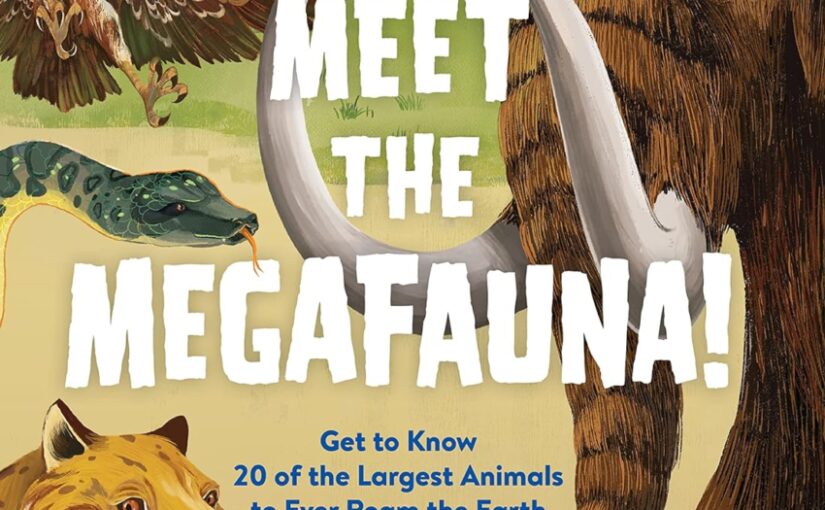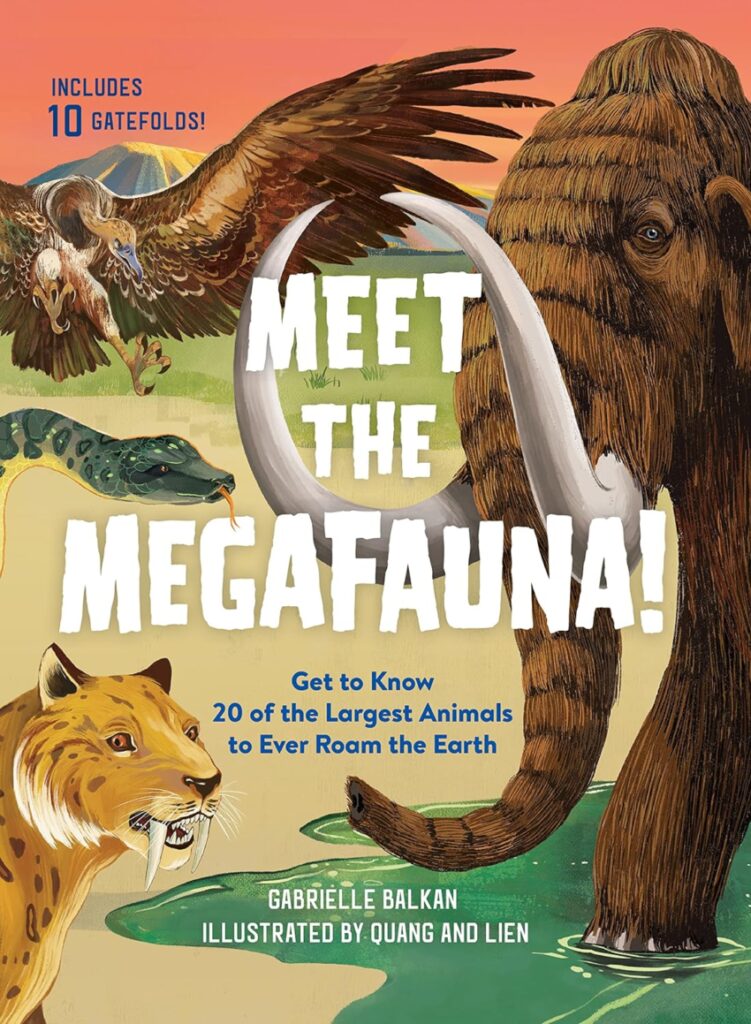The biggest and smallest are the population of most elementary school essays. Meet the Megafauna! is the sort of illustrated book that feeds the soul of elementary school students that attracted to extremes. Most of the time it will be boys who want to read about the biggest, extinct creature and then proceed to do a three-minute report on them to class. There are other ways for educators to use Meet the Megafauna!, but they do require a bit more panache.
This is for the kindergarten through second-grade teachers who need a five-minute story time break that they lead. Non-fiction story time for those young ages can be tough. It’s not that they don’t want to hear about real-life things, it’s that they don’t have the focus or time to follow the short presentation of that thing or person. Those middle through older elementary school students are able to, it’s those younger ones that, for the most part, are unable to do so simply because of their age.
Unfortunately, those ages are the prime dinosaur demographic and describing those larger-than-life creatures to younger ages can take one of two paths. If they’re going to explore them on their own time then the text needs to be simple, if it’s going to be free-range exploration then they’ll have jaw-dropping illustrations. Plus, dinosaurs have a “baby” reputation, which is kind of a pity. In this book, younger readers won’t be able to understand all of the words, but the illustrations will keep them engaged and allow their imaginations to kick in.
Instead of using Meet the Megafauna! as an illustrated book, try using it as 20 non-fiction, short stories. Even those advanced elementary school readers will have challenges in pronouncing some of the words; so why not take that challenge head-on and read them the paragraphs as if it’s a story? For example, let’s look at the content on the Giant Teratorn. It’s one of the largest birds to have ever flown the planet, could coast along at over 26,000 feet, and had a wingspan of 23 feet between the tips of its wings.
They ate around 20 pounds of meat a day and were able to glide with ease because they had to be. Think about how much effort and stress it must have been for a creature that large to be able to flap its wings. A teratorn wouldn’t want to chase food that’s too small, the effort to gobble up something on a snack level just isn’t worth it. It’s not that they’re lazy, but bigger creatures operate differently and this critter was even more problematic because they reproduced very slowly. The closest relative to this flying school bus is the Andean Condor, which also has a dwindling population.
The text that makes up his story in Meet the Megafuana! consists of three paragraphs spread out over four pages and one gatefold. A gatefold is when a page folds out or up that continues the illustration or story, and an illustrated book as big as this deserves multiples of them. There are 10 gatefold illustrations that add to the immense feeling of hopelessness that the prey of these beasts must’ve felt.
Some of the animals have longer text explanations and all of them have a small graph that lists their basic statistics. If presented with a bit of dramatic theory and spontaneous comments, these pages could engage everyone in the class. You could pose questions about what the animals look like, where they think they’d live or why they might’ve gone extinct. What’s refreshing about Meet the Megafauna! is that a majority of the animals are ones that elementary school kids haven’t seen. There are a couple of them that are massive versions of the ones that are currently alive, but for the most part, they’re humongous animals that don’t look like dinosaurs. The book ends with pages on where they went, protecting today’s big creatures, a glossary, and reading lists for students who want to read more on the subject.
Its oversized, illustrated package, Meet the Megafauna! is an attention-getting book that will reel in ages seven and up. Because it’s not dinosaur-centric, it has a more realistic, and different approach that otherwise would’ve precluded this illustrated book exclusively to younger audiences. As it stands, the book is a smart look at big beasts that are related to creatures that live now, in a gatefold package that will stimulate their imagination.
Meet the Megafauna! Get to Know 20 of the Largest Animals to Every Roam the Earth, is by Gabrielle Balkan with illustrations by Quang and Lien and is available on Workman Publishing Company, a subsidiary of Hachette Book Group.
There are affiliate links in this post.






 Facebook
Facebook Twitter
Twitter Flickr
Flickr GooglePlus
GooglePlus Youtube
Youtube